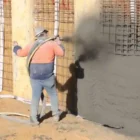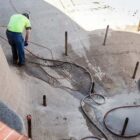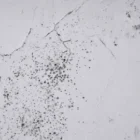
Formwork is that activity which is carried out just before taking up the final action of pouring concrete or that material which is designed for an element to be constructed.
Every week is a ‘QUALITY WEEK’ so it is an appropriate thought to deliberate on quality issues in construction actions.
Formwork or shuttering – as said above, undoubtedly stands on high number in the list of quality tools for construction actions. It is not just a container to hold the mass in liquid or semi liquid stage till it attains self standing status. It has few more important functions to perform as discussed below.
The prime function of formwork is certainly to hold the mass poured within its volume till the mass attains self standing status.
Additionally, it plays an important role in giving the finally desired shape to the element under construction / creation. Columns, beams, slab etc of the designed shape either by a structural engineer or an architect can be created only with the help of appropriately and accordingly designed and erected formwork / shuttering.
Strong formwork / shuttering ensures that it would retain position of all if it’s components throughout the process of the material being poured within its volume. None of its part would dislodge or succumb under lateral or vertical pressure being experienced. Adequately strong and tightly anchored supports for the components of formwork / shuttering, perform this task.
One of the most important contribution of formwork / shuttering which makes it significantly a quality tool, is its watertightness. It is always essential for a formwork / shuttering to be watertight. Not a single drop of the mass being poured inside its volume should leak out of any of its component/s. The very fact that every drop of mass being poured within its volume contains precious part of the mass; to be a part of the total mass required for that element and to be essentially available in the mass poured within the volume of formwork / shuttering. That leaking drop/s might take away equivalent quantity of cement or micro-concrete or epoxy etc from that mass within the formwork and as a result, that mass would polymerise without that equivalent quantum of the lost precious component. Such events result in under-performance of the constructed member in time to come.
Very close to formwork is reinforcement steel for any RCC member. Quality aspects of reinforcement will be discussed in next write up.
Erection / placing reinforcement steel – a quality statement
Subsequent to deliberating views on different quality aspects on formwork / shuttering, let us discuss quality aspects connected with erection of reinforcement steel. Few important points to be ensured for adhering to quality in execution of reinforcement steel erection are placed here.
- Maintaining the specified depth of cover:
Depth of cover holds an important key for performance of reinforcement steel as desired of it. This is achieved by placing cover / distance blocks manufactured with similar material and strictly maintaining plumb / line & level of reinforcement bars. Missing any of these would certainly lead to the stage from where either reinforcement steel would corrode (with inadequate depth of cover) or would deflect (with improper horizontal or vertical alignment because stresses generate along a perticular plane and if reinforcement steel is not positioned along that line / plane then stress compensation doesn’t happen). - Laps:
Lap length of 50 X diameter of reinforcement bar is absolutely essential and equally essential is staggering the laps. Laps should not be placed in one line (horizontal or vertical because that makes it a weak plane which can become line of failure. - Corroded reinforcement:
It must be made mandatory for removing rust from each reinforcement bar before it’s erection and also before formwork is erected. Though it takes nearly 40 months for reduction of every one milimeter of diameter of reinforcement bar, concreting with trusted reinforcement bar, concreting with trusted reinforcement bar makes it a weak RCC element right from the time of its initial set.
Few images of results of not following standard quality practice for erection of reinforcement steel at site are placed here which are self explanatory.
Formwork and reinforcement are integral parts of RCC element. Both of them inculcate quality for the RCC element so an equal importance is to be given to both of them as to he given to concreting activity.











